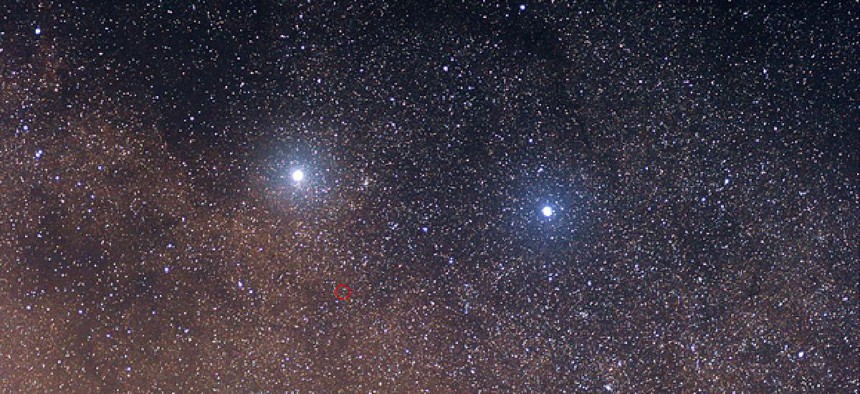What if NASA could figure out the math of a workable warp drive?

Alpha, Beta, and Proxima Centauri Wikimedia Commons
A new line of research hopes to drastically reduce the amount of energy required for warping space-time, and get us to Alpha Centauri in just two weeks time.
When, a few weeks ago, astronomers announced that an Earth-sized planet had been detected orbiting a Alpha Centauri B, a star in the closest system of stars to our own, and that this planet might, just might, mean that there is another planet, maybe another Earth-sized one, maybe, just maybe, in that magical distance from a sun that could give rise to life, and that all this was taking place right there in our galactic backyard, the next thought was inevitable: What if there is life there?
What if we, the people of the early 21st century, could be among the generation -- the first and only of all the generations ever -- that would be first know that we were not alone?
But then there is the inevitable letdown: Even if we did find a planet in one of those nearby stars' habitable zone and even, even, if we could detect an atmosphere that could harbor life, then what? Alpha Centauri may be the closest star system to Earth, but it's still four light years away. Voyager 1, our farthest-traveled probe is moving at *38,000 miles per hour*, and after 35 years, it's still in our solar system (barely). Moving at Voyager's speed, it would take 700 *centuries* for a missionto reach Alpha Centauri. With speeds like that, we stand to become the first generation to know life is out there, and to not be able to know much more than that. The prospect is maddening.
Of course, our only hope would be to travel at much, much greater speeds. As MIT astronomer Sara Seager explained here at The Atlantic to Ross Andersen:
There are a lot of people who think we have the capabilities to get to a tenth of the speed of light. People are using that number as a benchmark of what they think is attainable, whether it's with a solar sail or nuclear pulse propulsion. If we could achieve that speed, then we could get to Alpha Centauri in just over 40 years.
Whenever I give a talk to a public audience I explain the hazards of living on a spacecraft for 40 years, the fact that life could be extremely tedious, and could possibly even include some kind of induced hibernation. But then I always ask if anyone in the audience would volunteer for a 40+ year journey, and every single time I get a show of hands. And then I say "oh I forgot to mention, it's a one way trip," and even then I get the same show of hands. This tells me that our drive to explore is so great that if and when engineers succeed at traveling at least 10 percent of the speed of light, there will be people willing to make the journey. It's just a matter of time.
So, one-tenth the speed of light and we could be there in 40 years. That's not half bad. As Seager notes, many people would be willing to give up Earth and make that assuredly miserable journey for the privilege of being the first humans to explore another solar system. But still: 40 years, it's no cakewalk.
That's why a new number, care of NASA physicist Harold White, is so stunning: Two weeks. Two weeks to Alpha Centauri, he told io9, if only we can travel by warping space-time.
Read more at The Atlantic.


